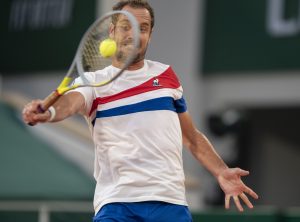Aryna Sabalenka won the Abu Dhabi Open last Wednesday, defeating Veronika Kudermetova 6-2 6-2 in the final of the WTA 500 event. In doing so, Sabalenka extends several ongoing streaks. She has won 15 matches in a row, picked up her third consecutive title (she also won the Ostrava and Linz Opens) and has not been beaten in six straight finals, last losing a title match to Zheng Saisai in Silicon Valley in August 2019.
Sabalenka has been in the habit of winning. By analysing her final, we take a look at what the Belarusian is doing to feed her habit and what her opponent would have to have done differently to be in with a chance.
Flawless first-strike tennis from Sabalenka
Sabalenka put on a masterclass in first-strike tennis. She won 63 of 100 total points, 46 of which were in the one to three shot rally length.
The key to Sabalenka keeping the points so short in her own service games was her serve. Of the 43 serves Sabalenka put in the court, 17 went unreturned by Kudermetova. When Kudermetova did get the return fairly deep in the court, Sabalenka often still found a mammoth forehand that would force an error from the Russian.
Kudermetova was unable to find a serve that troubled the Belarusian in any way. In fact, she was on the back foot from the word go on many of her service points; Sabalenka consistently found a huge return that won her 23 of 54 of Kudermetova’s service points in one to three shots. The gravity of this statistic cannot be understated; for Sabalenka to win a return point in 1-3 shots, Kudermetova would have to miss immediately after Sabalenka landed her return, or Sabalenka would have to hit a clean winner, i.e. serve, return, winner/error. Furthermore, Kudermetova won 21 points in total on her serve. Sabalenka dismantled this aspect of Kudermetova’s game by successfully going after every return she could.
Questionable first serve direction, second serve woes and loose backhands from Kudermetova
Kudermetova had the most success on her first serve when serving to the Sabalenka backhand, with the majority of them being unreturned. Surprisingly however, she primarily chose to direct her first serve to the forehand, directing her first serve there 53% of the time. A slight tactical adjustment in first service direction and a few more first serves in could have won her an additional service game or two.
No amount of tactical adjustment however, could cover up the fundamental flaw in her game that was being repeatedly taken advantage of by Sabalenka: the second serve.
At 5.7”, Kudermetova will never have the biggest second serve on tour, but what she cannot generate in power, she could potentially make up for with placement or kick. Her second serve was directed to the body 41.6% of the time, the most of the three service areas (forehand, backhand, body). Sabalenka was rarely pushed behind the baseline when returning the second serve and duly won 20 of 24 second serve return points. This was a common thread throughout Sabalenka’s Abu Dhabi campaign; her tournament average second serve return points won this week was 60.6%, 4% higher than her 2020 average.
Kudermetova should take notes from Sabalenka’s first round opponent, Polona Hercog. Hercog generates a lot of spin on her second serve which allows her to hold serve easier than most (despite being ranked outside the WTA’s top 50 for the majority of 2019, she finished that year with the eighth most second serve points won). This allowed her to race to a 5-2 lead with a double break in the first set against Sabalenka (after holding five set points however, she would go on to lose the set in a tiebreak). Having this weapon would give Kudermetova more time on the following shot and allow her to extend the rallies at her leisure.
That provides a decent segue into the final point: extending the rally length. Renown for her counterpunching ability, Kudermetova will no doubt have been attempting to do this. She actually executed this tactic well for a short period of time, grinding out a couple of breaks in the second set. Overall though, her second serve left her exposed and her backhand let her down, normally finding the court more consistently. All credit to Sabalenka however, who never gave Kudermetova the chance to find rhythm on this wing.
Aryna Sabalenka’s future
The Belarusian does not know how to lose at the moment, saving five set points in the aforementioned comeback against Hercog in the first round and surviving a serving onslaught from Elena Rybakina. In Ostrava, she proved herself the queen of comebacks, winning against Coco Gauff from 5-2 down in the decider and defeating Sara Sorribes Tormo from 0-6 0-4 down, taking the last 12 games. Regardless of how Kudermetova could have played this week, beating Aryna Sabalenka in this mood is extremely difficult.
Sabalenka will be hoping to carry this momentum into the Australian Open. This will be tough as her record at the Slams is no secret to the rest of the tour. She has an 11-12 record in Grand Slam main draws, her deepest run being a fourth round appearance at the 2018 US Open. Even more unnerving for Sabalenka, she has a 1-5 record against seeded opponents, her only win coming against Petra Kvitova at the same tournament.
Sabalenka’s fate lies on her own strings. If she can bully her opponents Down Under as well as she has this week, she should be one of the favourites for the title. If she continues to feel nerves at the tour’s biggest events, she could be her own worst enemy.
The statistics used in this article are from http://www.tennisabstract.com/ and https://www.tennistv.com/.
Main Photo:






